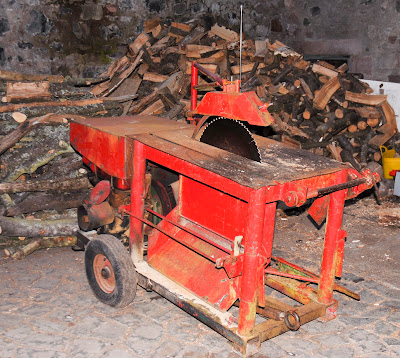If it ain’t broke…
Some days are good days, some days are bad days and others just need to start again. There I am slogging away in the office (building our model for Skegness :-) ) and the postie arrives. Great! That must be the thread I ordered, a few days ago, to reload the old Meccano loom. A hurried descent of the stairs and careful negotiation of the ‘obstacles’ carefully laid out in the hall, delivered me to the front door and, after removing “the wood from the hole” I found myself face to face with a very happy Royal Mail operative holding the wrong size parcel. As the smile on the postie’s face morphed into a grimace of confusion he said “Most people usually look a bit happier then that when I have a parcel for them!” I think my face must have dropped as I opened the door. The problem was the box he was holding was far too small to hold the thread I was expecting. I explained my reaction and thanked him warmly for his trouble. By this time I had worked out what was in my parcel.
 |
| Go to sleep - please! |
A few days ago I won a cheap, controlled heat hot air
gun on ebay. This Chinese made unit is incredible value for money. There is not
much to the unit but what is there works fine. The problem is I didn’t realise
how it is meant to work. I know I am a bloke and it is the law that we don’t
read the instructions until we have worked out how it works but in this case I
had a good excuse. The instructions look really informative, if you read
Cantonese…
So, what is it?
It is a controlled heat, hot air gun that has adjustable
temperature and flow rate. The really neat bit is it monitors the temperature
output constantly adjusting it to compensate for flow rate. It also shuts of
when the gun is returned to the cradle. It can be used with or without a reducing nozzle (three supplied) to direct the air flow. I think it will be used most of the time with the small one fitted, as shown in the picture above.
What’s it for?
In a nutshell, it’s for de-soldering components from PCBs and general heat source
ideal for heating heat-shrink tubing. It can supply hot air at a rate up to
12L/min and at temperatures between 100ºC and 450ºC. All this for just a
smidgen over thirty quid!
“If it ain’t broke, don’t fix it”
This is fine if you know it “ain’t broke” but what happens
when you think it is?
Turn it on and is reads 100ºC, pick up the gun and the fan
starts, put it down in its cradle, the fan stops and the display reads ‘SLP’
(Sleep). Good so far. Now, increase the
temperature and try it again, guess what? It didn’t shut down… Grrrr!
 |
| ...it is now! |
Out with the screwdriver and (after disconnecting it from
the mains) the gun was dismantled. Inside there is a 230V heating element, a
neat 24V fan a circuit board and reed switch. I decided that the reed switch
must be at fault. In an effort to remove it from the dollop glue and the
heat-shrink that held it in place it broke… Grrrr!
At least I now have a real fault to repair. It is at this
point, if this was a video blog, you would see me repairing the reed switch in
a sequence of speeded up film to a Led Zep soundtrack. Nevermind, it ain’t so
you wont! Suffice to say it is OK now.
It wasn’t the read switch at fault and everything else in the gun
looked and tested OK. I placed the gun back in its cradle and turned it on. The
display read “SLP” and the gun was silent
I picked it up and it started. Eureka! My delight was short lived. When
I replaced the gun it did not stop… Grrrr! Now I am really cheesed off. I dialed the temperature back down to 100ºC, watched while the readout fell to 100ºC and placed the gun back in the
holder – it stopped! At this point, I decide that the thing is winding me up
and was put on this earth to confuse me. Time for a stroll through the grounds
of Laughton Towers and forget about it.
All of a sudden it dawned on me Perhaps the fan is supposed
to run even if the element has been turned off to cool the thing down. I’ll
give it a go. Back to the workshop and I try it out. Sure enough, that is
exactly what is going on. If only I had been able to read Cantonese I could of
saved myself a couple of hours. To add insult to injury, Sue had been out all
day and when she got in this evening I started to tell her about the thing not
turning off and she said “Doesn’t the fan just carry on running until it has
cooled down?”
The morel of this story is always make sure you can read
Cantonese and if you still can’t work out what’s going on, ask the wife!
















